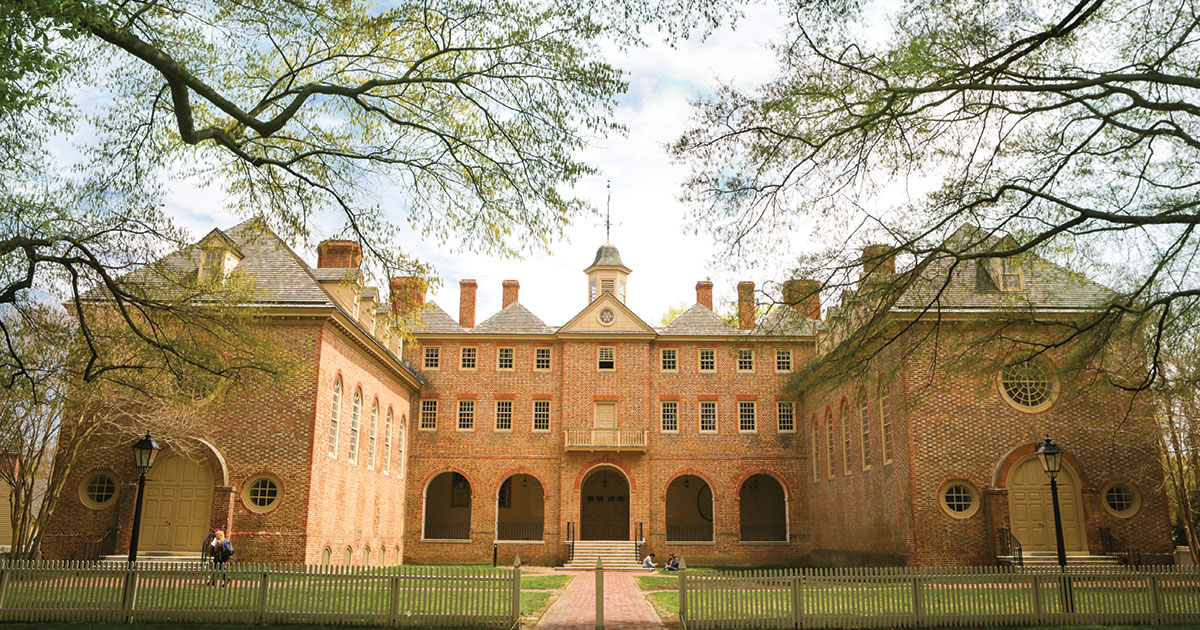Making a HEART-felt impact
 Drew Stelljes Ph.D ’07, assistant vice president for student engagement & leadership, remembers a student with a $1,500 hold on his account.
Drew Stelljes Ph.D ’07, assistant vice president for student engagement & leadership, remembers a student with a $1,500 hold on his account.
The student was the first in his family to go to college, and, at the time, was struggling with homelessness. After failing classes his first semester, he’d rescued his GPA from a 0.4 to a 2.36 and made Dean’s List. But even though his grades had recovered, the outstanding payment meant he couldn’t register for classes. His education was, for the moment, on hold.
That’s where William & Mary’s new HEART Fund covered the rest, allowing the student — now enrolled at the university — to continue the progress he’d made before.
“You never know what life circumstances are really going to rock you to the core,” said Stelljes. “This is a really wonderful commitment to understanding that our community has needs and trusts that we can figure out ways to help.”
That commitment comes in the form of private support from Teri Dale Dungan ’88, P ’17, P ’20, P ’23 and Thomas Dungan III ’88, P ’17, P ’20, P ’23. Their newly established Health Emergency and Resources for the Tribe — or HEART — Fund is a limber gift that gives Vice President of Student Affairs Ginger Ambler ’88, Ph.D ’06, P ’24 and her executive leadership team the ability to provide vital funds that serve students in meaningful and transformative ways.
The endowed gift exists to shepherd students referred to Student Affairs through emergencies big and small. From abrupt trips back home for a family member’s funeral to an emergency dental procedure, the HEART Fund is there for things urgent and unexpected — and since it is endowed, it will exist in perpetuity.
“It gives us amazing flexibility to be kind and to help our students flourish,” said Ambler.
As William & Mary alumni with three children who have attended or are attending the university, the Dungans saw firsthand a need for a fund with that kind of flexibility. They first started thinking about the gift after hearing stories about students who couldn’t buy dinner, much less afford medical insurance copays.
They both have also known Ambler from their time as students — Teri having been in the same sorority — and trust the pulse she keeps on campus life. Student Affairs already impacts so many parts of the William & Mary experience; it’s, as Teri says, the “heart of campus.” If you help Student Affairs better assist its students, she says, William & Mary wins.
The Dungans already have an established teaching fellowship at the Mason School of Business, and, this time around, they wanted to give back differently.
“We wanted to be able to help students in a real and impactful way, but not necessarily over-define what that help was going to look like,” said Teri. “It may not always be big dollars, but it has big impact.”
The most important gifts in a student’s life are sometimes the smallest gifts. For someone already facing need in some other area of their life, a small emergency — say a broken pair of glasses — can matter much more than a dollar value would suggest. If they can’t afford a new pair, says Ambler, how do they learn without the ability to see properly?
“There is an infinite number of things that can come up for a student; some situations may seem small from a financial perspective, but from the perspective of that student's life and their ability to be healthy and successful, can be debilitating,” said Ambler.
Hence the importance of the HEART Fund, which, with a reach both wide and deep, gives Student Affairs the rare freedom in higher education to respond nimbly to emergencies — sometimes without ever attracting attention.
In a perfect world, says Tom, the HEART Fund will help meet student needs without anyone knowing about it. Problems can be solved quickly, quietly and with dignity.
Their desire to work behind the scenes also affected the fund’s eventual name, which intentionally doesn’t include the Dungans. The gift, they say, is bigger than they are, and they’d be delighted if people in the future, inspired by the same things that led them to create the gift, added to the endowment.
He says he hopes the same for students who may receive help from the HEART Fund today.
“People do need help. But 10, 15, 20 years from now, they'll be on their feet,” said Tom. “I just view it as an interest-free loan, more than anything else. And, you know, people we help now at some point can hopefully contribute back to the HEART Fund.”

